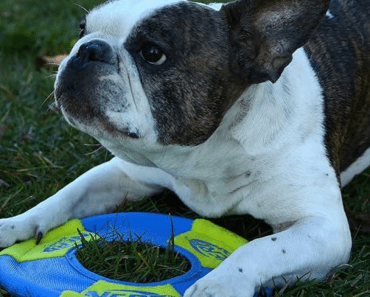Heatstroke can be a life-threatening condition for dogs, with their body temperature reaching dangerous levels. As responsible pet owners, it’s important to be aware of the signs of heatstroke in dogs and take preventive measures to keep them safe.
Some symptoms of dog heatstroke include elevated breathing rates, dry or sticky gums, abnormal gum color, lethargy, disorientation, and seizures. It can occur when a dog is left in a car with inadequate ventilation, but can also result from factors like lack of access to shade or water, exposure to hot hair dryers, or excessive exercise in hot temperatures. Brachycephalic breeds and muzzled dogs are at higher risk, as well as those with infections or muscle spasms.
Immediate treatment is crucial in cases of heatstroke. This includes cooling the dog with cool water or wet cloths and seeking veterinary care promptly. Acting quickly can make a significant difference in their recovery.
Key Takeaways:
- Recognize symptoms of heatstroke in dogs, such as elevated breathing rates and abnormal gum color.
- Avoid leaving dogs in cars with inadequate ventilation.
- Provide access to shade and water on hot days to prevent heatstroke.
- Brachycephalic breeds, muzzled dogs, and those with infections or muscle spasms are at higher risk.
- Seek immediate veterinary care if you suspect your dog has heatstroke.
Recognizing Heatstroke in Dogs
Dogs can be particularly susceptible to heatstroke, a serious condition that can occur when their body temperature rises to dangerous levels. It’s important for dog owners to recognize the symptoms of heatstroke so they can take immediate action to cool their furry friends down and seek veterinary care.
Some common symptoms of heatstroke in dogs include:
- Excessive panting
- Drooling
- Reddened gums
- Vomiting
- Diarrhea
- Mental dullness
- Uncoordinated movement
- Collapse
These symptoms may also indicate heat exhaustion, which can progress to heatstroke if not addressed promptly. Heatstroke can have serious consequences for a dog’s health, including brain swelling, kidney failure, intestinal bleeding, and abnormal clotting of blood.
As a dog owner, it’s crucial to be observant and proactive in preventing and recognizing the signs of heatstroke. If you notice any of these symptoms in your dog, it’s important to take immediate action to cool them down. Move them to a cool, shaded area, offer them cool water to drink in small sips, and use cool water or wet towels to lower their body temperature.
If your dog’s condition does not improve or their symptoms worsen, it is imperative to seek veterinary care immediately. A veterinarian will be able to provide the appropriate treatment and supportive care to help your dog recover from heatstroke.
Causes of Heatstroke in Dogs
Heatstroke in dogs can occur due to various factors, and understanding the causes can help pet owners take preventive measures to protect their furry friends. Here are some common causes of heatstroke in dogs:
- Leaving dogs in a car with inadequate ventilation: The most frequent cause of heatstroke in dogs is leaving them unattended in a parked car on a hot day. The temperature inside a car can rise rapidly, even with the windows cracked open, leading to overheating and heatstroke.
- Lack of access to shade or water: When dogs are exposed to direct sunlight without access to shade or water, their body temperature can increase rapidly, putting them at risk of heatstroke.
- Exposure to hot hair dryers: Using hot hair dryers, especially on high heat settings, can subject dogs to excessive heat, leading to heatstroke.
- Excessive or vigorous exercise in hot temperatures: Dogs that engage in intense physical activity, such as running or playing in hot weather, may overexert themselves, causing their body temperature to rise dangerously.
- Restricted airway in brachycephalic breeds: Brachycephalic breeds, such as Bulldogs and Pugs, have a restricted airway due to their short snouts. This anatomical feature makes it harder for them to regulate their body temperature efficiently, increasing the risk of heatstroke.
- Muzzled dogs: Dogs that are muzzled, particularly those that have a full-face muzzle, may have difficulty panting effectively, which is essential for regulating body temperature. This can contribute to heatstroke.
- Infections causing fever and seizures or muscle spasms: Dogs with underlying infections that cause fever or seizures and muscle spasms are more susceptible to heatstroke. These conditions can disrupt the body’s ability to thermoregulate effectively.
To prevent heatstroke in dogs, it is important to be aware of these causes and take the necessary precautions. Providing adequate shade, access to cool water, and avoiding leaving dogs in hot cars or poorly ventilated areas are crucial steps in keeping them safe. Additionally, limiting exercise during hot weather and being mindful of the specific needs of brachycephalic and muzzled dogs can help prevent heatstroke.
Treatment for Heatstroke in Dogs
Heatstroke in dogs is a medical emergency that requires immediate treatment to ensure the well-being of our furry friends. When a dog is experiencing heatstroke, the primary objective of treatment is to safely reduce their body temperature. There are several effective methods that can be employed to cool down the dog and alleviate the symptoms.
One method is to pour cool water over the dog’s head, stomach, armpits, and feet. This helps to dissipate heat and lower their body temperature. Another option is to apply cool and wet cloths to these areas, promoting evaporation and providing relief. It is essential to ensure that the dog has access to a continuous flow of air, as it aids in evaporative heat loss.
While certain techniques like rubbing alcohol on the footpads or using ice packs may seem tempting, it is important to note that these methods can be controversial and may not be beneficial for every dog. Therefore, it is recommended to consult with a veterinarian before attempting these approaches.
In severe cases of heatstroke, intravenous fluids, mild sedation, and oxygen therapy may be administered under the supervision of a veterinary professional. The dog’s rectal temperature will be closely monitored throughout the treatment process, and the appropriate measures will be taken until the dog shows signs of recovery or the temperature falls to a safe level.

Prognosis and Prevention of Heatstroke in Dogs
The prognosis for heatstroke in dogs depends on several factors, including the severity of the condition, how long it persisted, and the overall health of the dog. Immediate treatment is crucial for a positive outcome. With prompt intervention and veterinary care, most healthy dogs can recover quickly from heatstroke.
However, it is important to note that some dogs may experience permanent organ damage or complications that can arise later. Therefore, it is essential to monitor them closely after a heatstroke episode and seek ongoing veterinary care to address any potential long-term effects.
Dogs that have experienced a heatstroke incident are at a higher risk for subsequent episodes. It is crucial to take preventive measures to minimize the chances of recurrence.
Preventing Heatstroke in Dogs
To prevent heatstroke in dogs, it is vital for pet owners to be proactive and attentive. Here are some preventive measures that can help safeguard your furry friend:
- Ensure access to shade and water: Create a comfortable and shaded area for your dog to rest in on hot days. Additionally, always provide plenty of fresh, clean water to keep them hydrated.
- Avoid leaving dogs in hot cars: Never leave your dog unattended in a parked car, as the temperature inside can rapidly rise, putting them at risk of heatstroke. Even with windows cracked, it can quickly become dangerously hot.
- Avoid poorly ventilated environments: Make sure your dog’s living space, such as a dog house or crate, is well-ventilated to allow adequate airflow.
- Limit exercise on hot days: Avoid vigorous activities during peak heat hours and opt for early morning or late evening walks when temperatures are cooler. Keep an eye on your dog’s behavior for signs of exhaustion or overheating during any physical activity.
By being attentive and taking these preventive measures, you can significantly reduce the risk of heatstroke in your beloved canine companion.
Remember, prevention is always better than cure when it comes to heatstroke in dogs. By being mindful of the outside temperature and taking appropriate precautions, you can keep your four-legged friend safe and protected from this potentially life-threatening condition.
First Aid for Heatstroke in Dogs
If you suspect that your dog is suffering from heatstroke, it is important to act quickly. Immediate first aid can make a significant difference in their recovery. Follow these steps to provide essential care for your furry friend:
- Move your dog to a cool area with good ventilation. This could be an air-conditioned room or a shady spot with a breeze.
- Offer them small sips of water to keep them hydrated. It’s important not to let them drink too much too quickly as it may cause vomiting.
- Cool them down with cold water or wet towels. Avoid using ice-cold water as it can constrict blood vessels and hinder heat dissipation. Focus on areas like the head, neck, armpits, and groin.
- Continue to monitor their temperature and cool them down until their breathing, panting, and overall demeanor start to improve.
When to Seek Veterinary Advice
While providing first aid is crucial, it’s essential to understand that heatstroke can escalate into a life-threatening emergency. Seek immediate veterinary advice if:
- Your dog’s condition does not improve after cooling attempts.
- They continue to exhibit severe symptoms such as vomiting, seizures, or unconsciousness.
- Their body temperature remains elevated despite cooling measures.
Veterinary care may include intravenous fluid therapy to replace fluids and minerals, as well as monitoring for secondary complications that can arise from heatstroke.
Conclusion
Heatstroke is a serious condition that can have severe consequences for dogs. It is crucial for pet owners to recognize the symptoms of heatstroke, such as excessive panting, drooling, and mental dullness, and to take immediate action. Understanding the causes, such as leaving a dog in a hot car or exposing them to excessive heat, can help prevent heatstroke from occurring.
If your dog does experience heatstroke, swift treatment and veterinary care are essential for a positive prognosis. Cooling the dog down with cool water and wet cloths, along with seeking professional help, can make a significant difference in their recovery. It’s important for pet owners to be proactive and vigilant in providing a safe environment for their dogs, especially during hot weather.
By being aware of the risks associated with heatstroke and taking preventive measures, such as providing shade and water, avoiding hot cars, and limiting exercise in high temperatures, pet owners can significantly reduce the risk of heatstroke and ensure their dogs’ well-being. Remember, your furry friend relies on you to keep them safe and protected, so prioritize their comfort and health during hot weather.
FAQ
What are the symptoms of heatstroke in dogs?
Some symptoms of heatstroke in dogs include elevated breathing rates, dry or sticky gums, abnormal gum color, lethargy, disorientation, seizures, excessive panting, drooling, reddened gums, vomiting, diarrhea, mental dullness, uncoordinated movement, and collapse.
What causes heatstroke in dogs?
Heatstroke in dogs can be caused by leaving them in a car with inadequate ventilation, lack of access to shade or water, exposure to hot hair dryers, or vigorous exercise in hot temperatures. Brachycephalic breeds, muzzled dogs, and those with infections or muscle spasms are at higher risk.
How is heatstroke in dogs treated?
Treatment for heatstroke in dogs involves cooling the dog with cool water or wet cloths, ensuring continuous airflow, monitoring the dog’s rectal temperature, and seeking veterinary care. Intravenous fluids, mild sedation, and oxygen therapy may be used as well.
What is the prognosis for heatstroke in dogs?
The prognosis for heatstroke in dogs depends on the severity of the condition, how long it persisted, and the overall health of the dog. With immediate treatment, most healthy dogs can recover quickly, but some may experience permanent organ damage or complications that arise later.
How can heatstroke in dogs be prevented?
Heatstroke in dogs can be prevented by providing access to shade and water, avoiding leaving them in hot cars or poorly ventilated environments, and limiting exercise on hot days. Being aware of the outside temperature and taking appropriate measures can help keep your dog safe.
What should I do if I suspect my dog has heatstroke?
If you suspect your dog has heatstroke, you should move them to a cool area with good ventilation, offer them small sips of water, and cool them down with cold water or wet towels. It’s important to avoid using ice-cold water and seek veterinary advice as heatstroke can become a life-threatening emergency.






